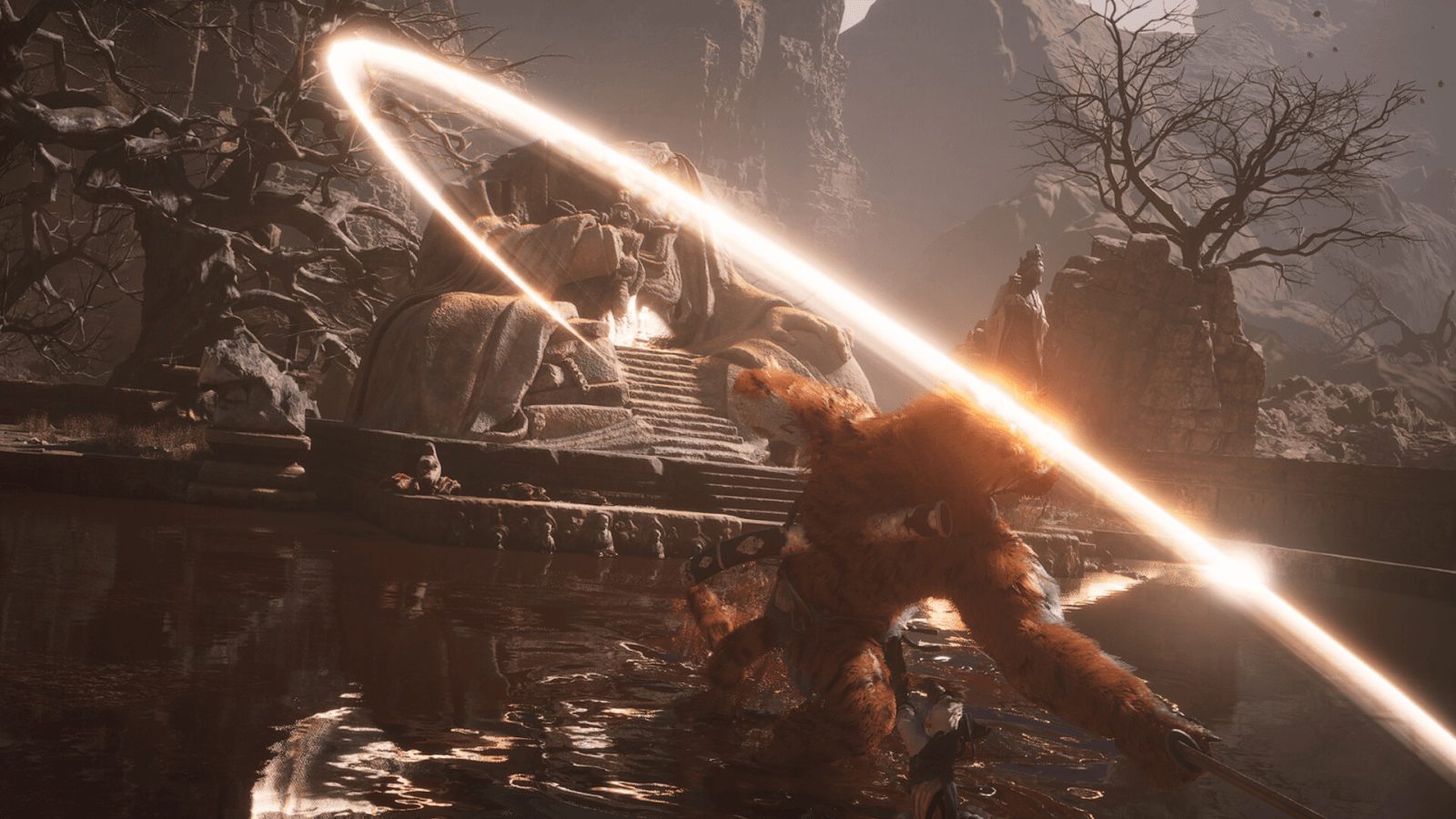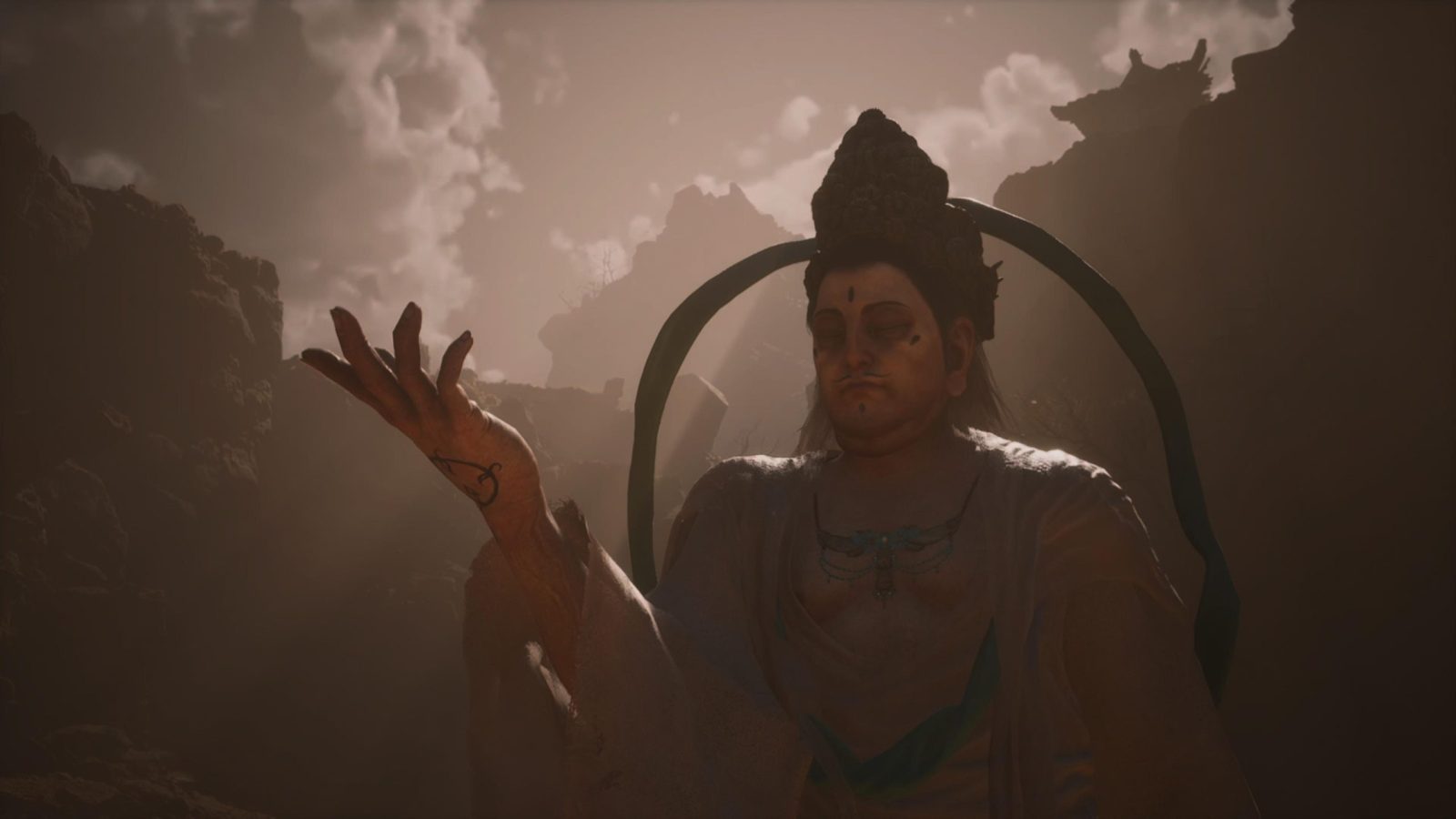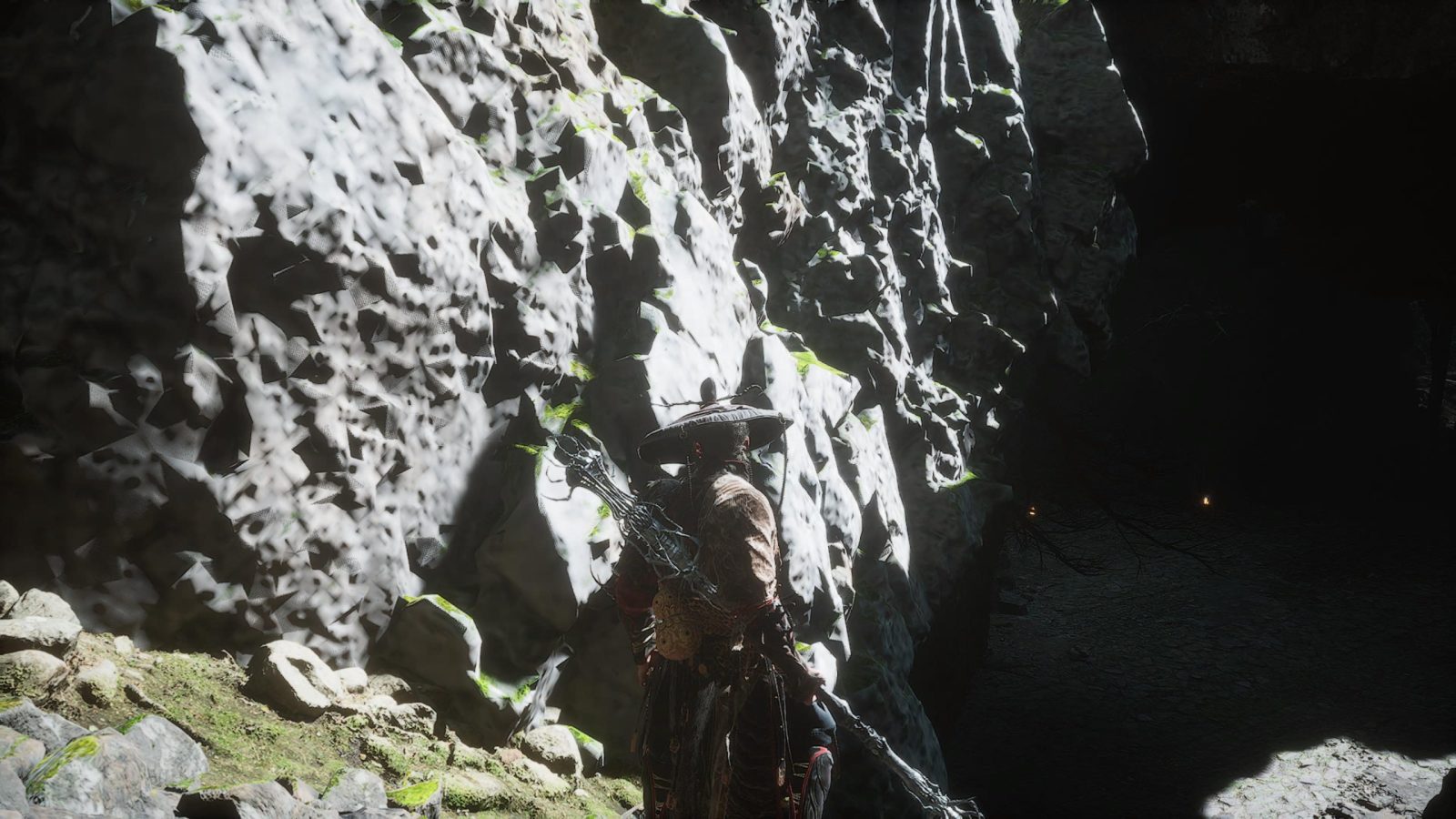
I grew up watching and reading Journey to the West, so when Game Science first announced Black Myth: Wukong back in 2020, I knew this was something I didn’t want to miss. For those unaware, Journey to the West is a 16th-century novel, one of the Four Great Classical Novels of Chinese literature. It tells the story of a monk’s pilgrimage to retrieve sacred Buddhist scriptures, aided by his disciples, including Sun Wukong, a mischievous and rebellious monkey. There’s a reason why this is many people’s most anticipated title of the year, and it sure doesn’t disappoint.
So narratively, Black Myth: Wukong doesn’t retell the story of Journey to the West. Instead, it builds upon the already well-known tale of Sun Wukong with a fresh take. You take control of the Destined One, a monkey who embarks on a quest to collect relics of the legendary Wukong after he is bested by a deity known as Erlang Shen. If you’re familiar with the source material, then this game will surely be a treat as you meet several characters that are mentioned in the original story, including fan favorite pig Zhu Bajie . However, the story can feel difficult to follow if you are coming in blind. There are also multiple endings depending on the choices you make throughout the game, including a secret one!
Everyone wants to know if this game is a Souls-like game, and the answer is kind of. It clearly draws inspiration from those types of games, especially in terms of stamina management and boss difficulty. The game is not a walk in the park, but is more than fair. You have a light and heavy attack, along with a dodge. Heavy attacks can be charged with a focus meter that fills up as you attack enemies. Interestingly enough, there’s no traditional block or parry mechanic, but there are skills you can use at the expense of a cooldown and mana that can mirror the same outcome. You do respawn at bonfire equivalents, but you don’t lose any “Souls” currency needed to level up. One of the standout features is your ability to transform into different creatures and objects after defeating them. This not only serves as an upper hand in combat, but also in exploration, as you can transform into a cicada to access previously inaccessible areas.
Progression comes in the form of an extensive skill tree system that allows you to upgrade not only passive stats such as health and stamina, but also unlock different stances and abilities. There are some cool abilities, and all of them are true to Wukong’s abilities in the actual story, such as plucking hairs to create clones. You can refund your points on the tree at any time for free, so don’t be afraid to experiment with different builds and abilities! Wearing full sets of the same armor provides bonuses, like the recent God of War games, and you can use gathered items and materials to craft new armor and weapons. Then there’s also relics that act as passive bonuses and curios that act as your typical amulet or ring in other role playing games. Exploration is mostly linear with some side areas to go down. This is not an open world game, even though level design can look expansive despite being closed off by invisible walls. My biggest gripe about traversal is the lack of a map, which can make exploring kind of frustrating. There are over 80 bosses in this game, with plenty of hidden secrets, and even a New Game Plus mode at launch.

For the most part, technical performance is decent on a PC with an RTX 3080 and 32GB of ram. Keep in mind the recommended setup on Steam is an RTX 2060 and 16GB of ram. But even then, I can’t play the game with all graphical settings set to Very High and Ray Tracing turned on without stuttering and frame drops. There is inevitably some input delay and lag as well. I had Super Resolution set to 50 with DLSS Quality Mode set to Performance and everything else set to High in graphical settings. The game mostly maintains 60fps but sometimes hovers in the mid 50s with significant dips to 30s in some areas. Nvidia did release a driver update for Black Myth: Wukong, but not sure how much it helps. On the other hand, load times are quite lengthy, taking over 17 seconds to load in from the main menu.
That being said, the visuals here are some of the most breathtaking and realistic I’ve ever seen in a video game, with extremely detailed environments and impressive character models. The transition from Unreal Engine 4 to Unreal Engine 5 significantly enhanced the overall graphical fidelity. The lighting in particular deserves high praise, with realistic shadows and reflections that add depth and realism to the scenes. What I enjoyed the most is the game’s art direction, which obviously draws inspiration directly from Chinese mythology and folklore, creating a unique and culturally rich aesthetic. The mythical creatures, ancient temples, and mystical landscapes are all designed with a high level of authenticity and creativity.
Speaking shortly about the experience on PlayStation 5, most of the journey was absolutely gorgeous. However there were areas that looked noticeably lower quality when playing in performance mode. It was jarring when you’d get sections of the environment looking stunning, yet portions of the terrain like rocks and trees look blurry and washed out. It was certainly distracting as I progressed through the game, which was a shame because when the game is performing well the graphics are one of the best aspects of the experience.
Both visual fidelity options outside of performance were simply too choppy for me to want to leave on for any extended period of time. Sure you might get a slightly higher resolution, but it was hardly worth tanking my framerate when this game relies so much on dodging and careful movement during combat.
Beyond the graphics, there weren’t too many technical issues besides some stuttering in the later chapters when there were a lot of fire effects on the screen. Combat felt snappy and dodges were responsive, but activating abilities like the healing gourd and medicine did feel like they took some extra time to come out. I often found myself repeatedly pressing the inputs and nothing would happen for multiple seconds, which in a game like Black Myth: Wukong, is an eternity.
 Finally, in terms of settings, you can customize and rebind keyboard/mouse controls, but you can’t if you’re playing on a controller. That being said, I do appreciate that there are official mappings for both Xbox and PlayStation controllers, because a lot of PC titles only support Xbox controller schemas. Spoken audio can be toggled between Chinese and English, although I recommend you play in Chinese with English subtitles. There are not a ton of accessibility settings as you’re not able to adjust difficulty level, but you can toggle colorblind mode and change motion blur. But if you need a refresher on in-game mechanics, there’s a nifty Know-How section in the menu that reminds you of pretty much anything you want.
Finally, in terms of settings, you can customize and rebind keyboard/mouse controls, but you can’t if you’re playing on a controller. That being said, I do appreciate that there are official mappings for both Xbox and PlayStation controllers, because a lot of PC titles only support Xbox controller schemas. Spoken audio can be toggled between Chinese and English, although I recommend you play in Chinese with English subtitles. There are not a ton of accessibility settings as you’re not able to adjust difficulty level, but you can toggle colorblind mode and change motion blur. But if you need a refresher on in-game mechanics, there’s a nifty Know-How section in the menu that reminds you of pretty much anything you want.
Black Myth Wukong
Great
Game Science’s adaptation not only pays homage to the beloved Journey to the West but also introduces innovative gameplay mechanics and stunning visuals powered by Unreal Engine 5, making it a standout title in the action RPG genre. Black Myth: Wukong is by all means an ambitious title for a studio’s first project, and for the most part, it succeeds in aiming high. Its strengths in gameplay, visuals, and music are undeniable, but it is held back by technical problems and design choices that may not appeal to everyone.
Pros
- Breathtaking visuals and art direction
- Innovative combat and boss design
- Refreshing storytelling
Cons
- Choppy technical performance
- Lackluster level design
- Can feel like a boss rush experience


